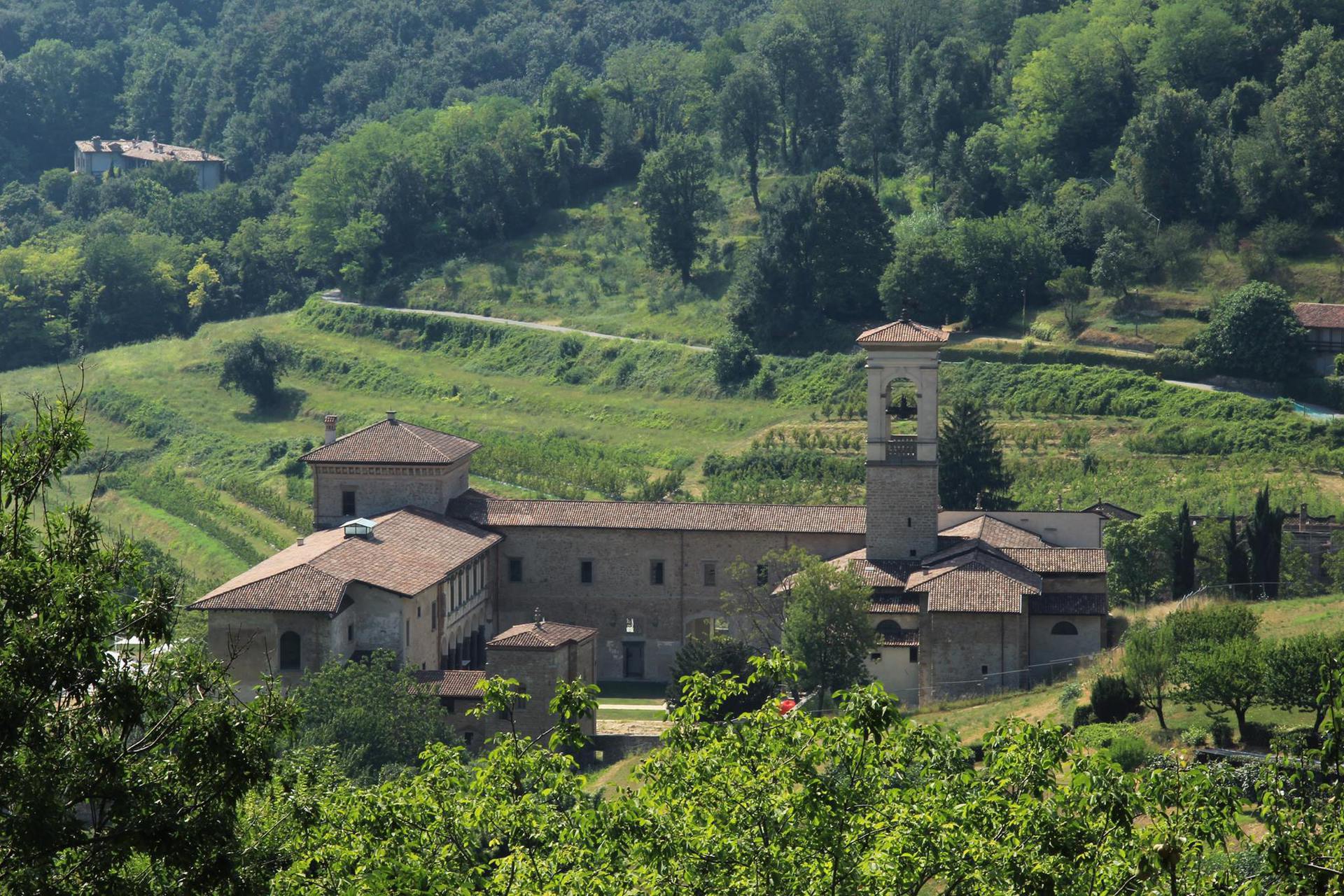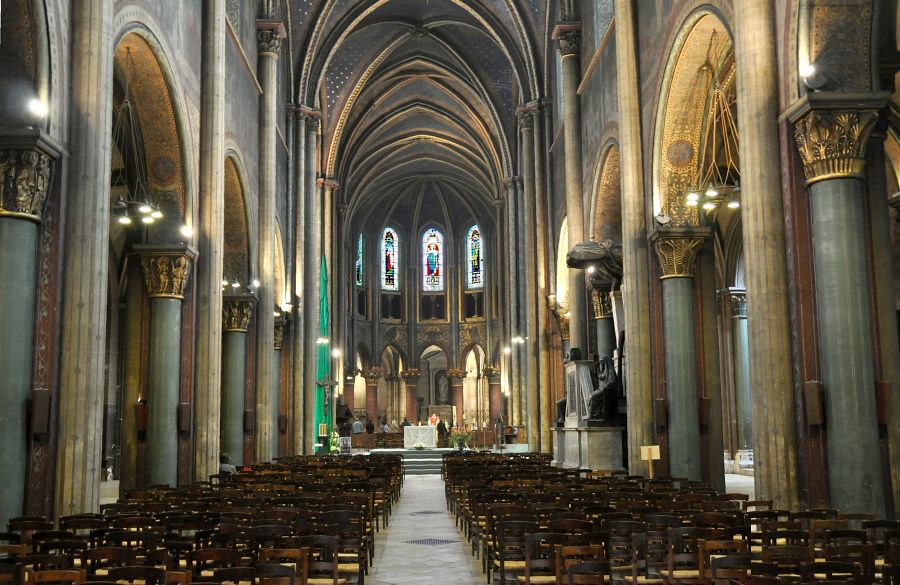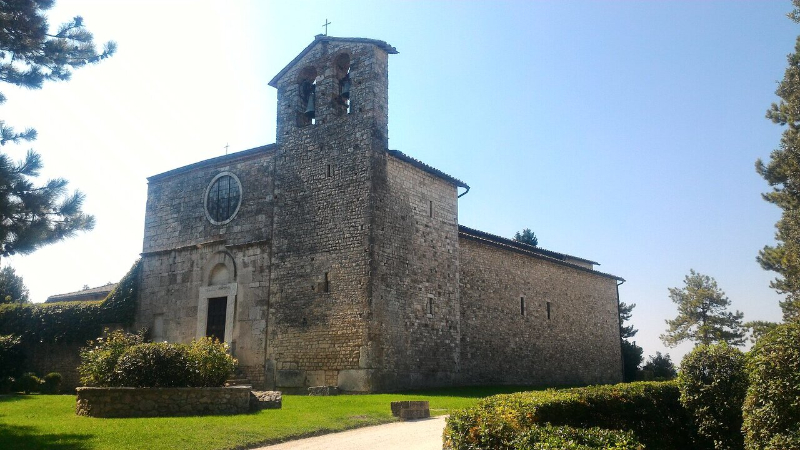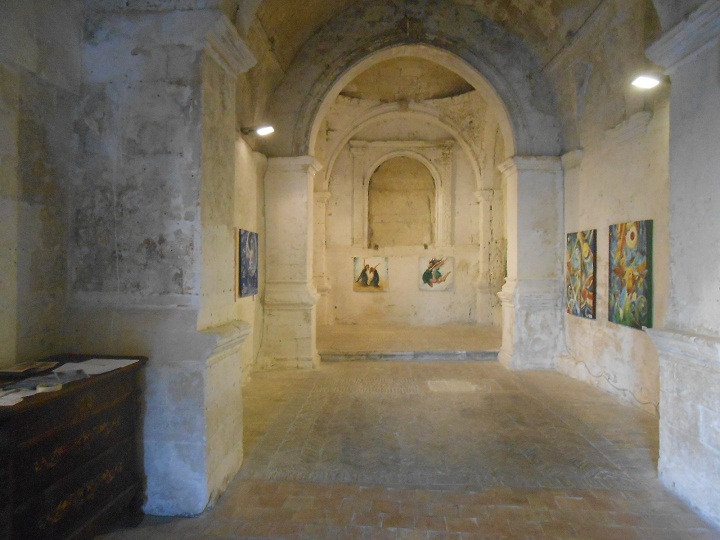The’ancient Monastery of Astino is located in the municipal area of Bergamo, at the foot of the southwest slope of the hills on which the ancient core of the cityà rises. The foundation of the monastery dates back to 1070 by Vallombrosian monks
under the leadership of the’abbot Bertario (follower of St. John Gualbert Visdomini), in the historical phase of Christian revival of the’11th century. The first nucleus of the monastery consisted of the Church of the Holy Sepulcher (1117) and the abbey, buildings with a Romanesque layout that were later enlarged and remodeled several times , particularly in the 15th and 16th centuries.
The earliest period of the monastery’s life (11th-12th centuries) was also the most important for the work of the first abbots Bertario and Maifredo da Asti: thanks to donations from wealthy citizens and the Municipality of Bergamo itself, the structure grew by incorporating an important agricultural estate, and by establishing within it a hospital and a charity for the poor and prisoners.
The unstable political situation of the Bergamasque territory in the 15th century (wars between the Visconti and the Republic of Venice) affected the development of the monastery, gradually reducing its influence. However, extensions and renovations of the buildings followed one another on several occasions even in the 15th and 16th centuries. In particular, the construction of the monastery cloister supported by sandstone columns dates back to the 16th century. The facade and interior decorations of the Church of the Holy Sepulcher, on the other hand, are from the 17th and 18th centuries.
The subsequent vicissitudes of the monastic complex are similar to those of other religious institutions: the convent was suppressed in the Napoleonic era (1797) and its property conferred to the’Ospedale Maggiore di Bergamo, which retained ownership until the 20th century.
The abbey structure was used in the 19th century as a psychiatric hospital, then used for agricultural activities until it was sold to private owners in 1923. For 50 years the once sacred buildings were still used as agricultural storage and housing for farmers. In 1973 the complex was acquired by a real estate company with the intention of creating a large golf course with related service facilities in the area. However, this project found neither approval nor approval in the urban planning instruments adopted by the City of Bergamo, nor in the local community, and the monumental complex – like the surrounding agricultural estate and adjacent farmhouses – was completely abandoned with serious degradation of its buildings of great historical and artistic value.
Since 2007, the monastic complex of Astino è passed into the disposition of the MIA Foundation – Congregazione della Misericordia Maggiore di Bergamo, which acquired the entire property of the company’Val d’Astino s.r.l. The foundation è the’heir of the very ancient institution of municipal origin established to manage the civic basilica of Santa Maria Maggiore in Bergamo Alta and to carry out works of assistance and charity. In this way, the monumental complex and the agricultural area of Astino have returned to public availability, thus enabling the start of new prospects for the preservation and enhancement of a cultural asset, as well as one of exceptional artistic value, particularly linked to the territory and citizenship of Bergamo.
The MIA Foundation and the Municipality of Bergamo, with the collaboration of other public and private entities, began in 2008 a project path for the definition of public and compatible uses with the cultural and environmental characteristics of the complex.
In particular, the City of Bergamo (the controlling entity of the MIA Foundation) has prepared an outline plan for the preservation and enhancement of the monumental complex and its territorial appurtenances (totaling 628,000 sq. m.).
In addition to urgent works aimed at halting the deterioration of the monument, the plan includes some initial hypotheses for the intended use of the compendium:
Restoration of the liturgical use for the Church of the Holy Sepulchre and adjoining rooms (sacristy)
Educational use of the monastic building (new headquarters of the Conservatory of Music)
Inclusion of activities of research and scientific dissemination
Receptive functions to support public use (reception rooms, refreshments, etc.).
Municipality of Bergamo and MIA Foundation – in collaboration with the Province of Bergamo and the Colli dei Colli Park Consortium – have also prepared the’initiation of a Program Agreement for the realization of the restoration and enhancement of the Monastery of Astino.
In 2008, the MIA Foundation prepared an executive project of urgent interventions to secure the monastic complex of Astino, in order to ensure a first essential conservation work of the buildings.













